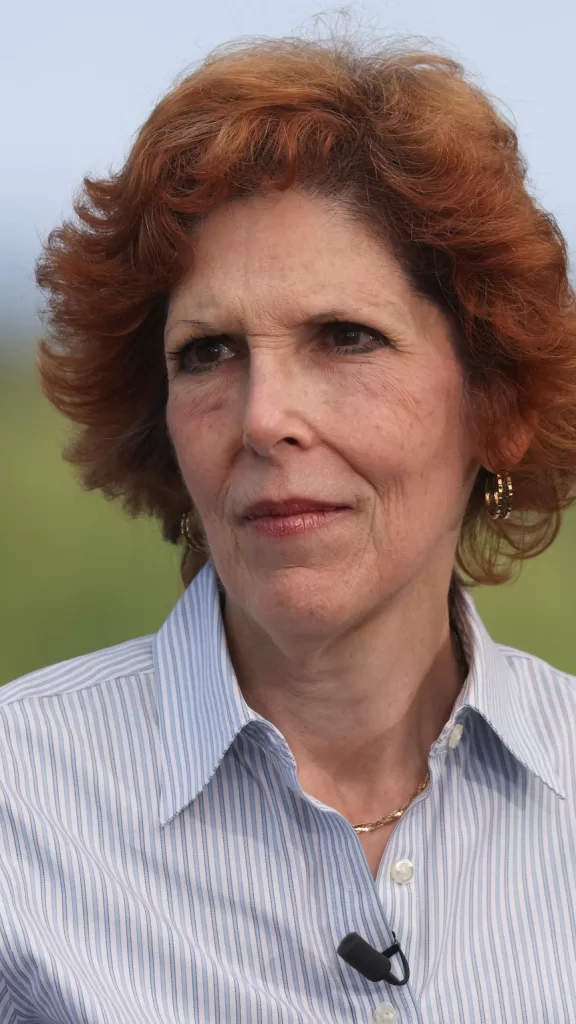A voting member of the US Federal Reserve has joined the chorus of central bank officials pushing back against the prospect of interest rate cuts occurring during the next few months.
Loretta Mester, president of the Cleveland Federal Reserve, has told ABC TV’s The Business program the US economy is in a “good position” at the moment with inflation having fallen faster than many people anticipated.
But the fight to contain inflation wasn’t over, she said, because inflation was still too high, and the last leg of disinflation could be harder to achieve, and take longer to achieve, than last year’s disinflation.
She said she’d like to see more evidence that US inflation was definitely heading down towards 2 per cent before rates were cut.
She noted investors had been tipping that the first rate cut in the US would be coming in March, but she felt that was premature.
“I think the market got ahead of itself a little bit,” she told the ABC, in the video below.
Biding time to see more data in US
Dr Mester holds a vote on the Federal Open Market Committee (FOMC), which sets the benchmark US interest rate.
The Fed judges inflation of 2 per cent to be optimal over the longer run, and US inflation is currently running at an annual pace of 3.4 per cent.
Dr Mester said her next forecast wouldn’t be formulated until the Fed’s March meeting, but as things stood, and if inflation kept on the path she was expecting, she was still of the view that the Fed would probably need to cut rates three times this year.
However, she said inflation was still too high for comfort right now, and there were plenty of risks in the global economy that could throw things off course in coming months.
“One of the key pieces of data here is inflation, but more importantly even is inflation expectations, which is forward looking,” she said.
“As that continues to come down, and it has been coming down — the near-term inflation expectations — that means that we probably should be adjusting our nominal fed funds rate in order to not be inadvertently becoming more restrictive, but the actual timing of that, you have to evaluate the incoming data and the risks around that.
“If the economy evolves as I expect it to, then I’d be comfortable feeling that it’s going to be later this year that we will be probably in a position to be able to start normalising the interest rate back down.
“I think we have to keep watching, assessing, and then you know, if inflation keeps coming down and it comes down as fast as it did before then we can adjust our policy, if it turns out that it’s stalling or it’s being more persistent then we can adjust the other way,” she said.
RBA says another rate rise might be needed in Australia
In Australia this week, the RBA kept the cash rate steady at 4.35 per cent.
In its post-meeting statement, the RBA Board said inflation had clearly eased in Australia but it was still too high at 4.1 per cent.
RBA governor Michele Bullock warned that she may still need to lift rates again if conditions demanded it, also noting, similarly to Dr Mester, that there was a difference between how the RBA was thinking about the likely path for interest rates and how investors in financial markets were apparently thinking about things.
“We are not ruling in or out anything,” Ms Bullock cautioned.
“We are focused on bringing inflation down. We still think the risks are balanced but as you would know, the further out we go with our forecasts the more uncertainty there is around them.
“Markets will make their own decisions and they’re putting their money where their mouth is on those sorts of things, but we’re not really driven by market pricing.
“What’s important for us is looking at the economic data. We want to see that inflation continues to decline,” she said.
The RBA’s central forecast is for inflation to return to its target range of 2 to 3 per cent in 2025, and to the midpoint of that range in 2026.
Back to the US, and Dr Mester said US employment was still solid and spending data had been holding up better than expected, and that had given Fed officials “leeway” to really make sure that inflation was tracking downwards.
She said the Fed wanted to hit its dual-mandate goals, which are maximum employment and price stability, and it wanted to be certain that inflation was heading in the right direction.
“You never want to rule anything out, because the economy could evolve very differently than anticipated, but my feeling is that we are at a peak rate, and that the real decision going forward is, you know, what’s the appropriate time to begin reducing the degree of restrictiveness,” she told the ABC.
As with her counterparts at the Fed, as well as officials from the European Central Bank and RBA governor Michele Bullock, Dr Mester said she expected the pace of disinflation to slow down now that the worst of the COVID supply chain bottlenecks had been resolved.
